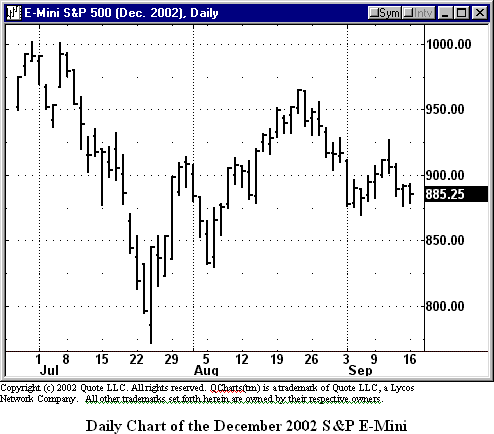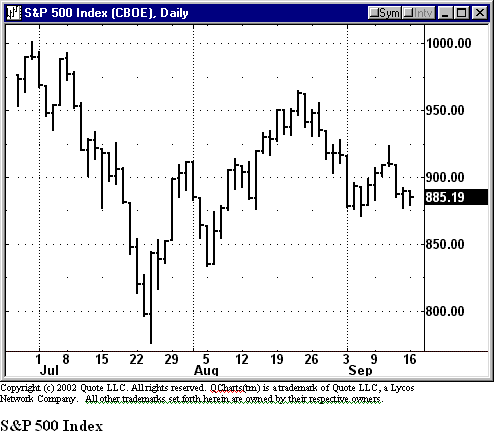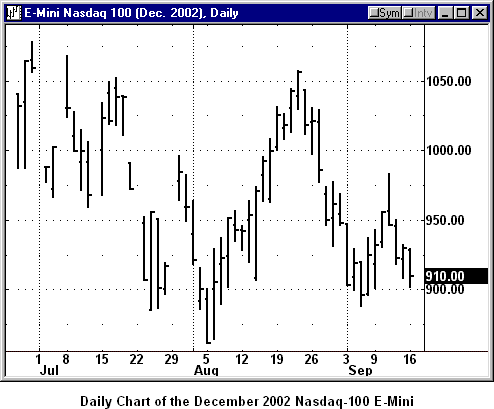Don Miller’s E-Mini Strategy Course, Part I
The Key Strategies, Indicators, And Money Management Techniques Of A
Professional E-Mini Trader
Introduction
In this three-part course, I will provide you with an
overview of the E-minis and E-mini trading.
If you have had no previous exposure to my E-mini trading courses or have
attended my live seminars before in the past, then this course is designed
to get you up to speed.
Don Miller
Course Contents
I will take you through three parts.
Part I: Do you have trading experience in stocks, but are new to futures and the
E-minis? If so, this section will take you through all the basics so that you
can easily incorporate the E-minis into your trading repertoire.
Part II: We’ll cover the similarities and differences between E-minis and
stocks, price movement and the various types of orders you can place with the
E-minis.
Part III: There are a number of good reasons why many stock traders are
switching their main trading activity over to the E-minis. I explain their
advantages and how you as an E-mini trader will benefit.Â
Introduction To E-minis
One of the most exciting financial vehicles I have seen in my trading career are
the index futures and their ability to participate in broad market moves with
one trading decision. More specifically, the “E-mini” futures contracts have
been a focal point of my trading as well as many other financial professionals
and individual investors.
In fact, many stock traders are finding the advantages of trading the E-minis so
compelling that they are making the switch, and like me and many others — they
have made the E-minis their main trading vehicle.
Are you one of those traders who are making the switch from trading stocks to
trading the E-minis? Or are you perhaps thinking about it?
If so, Parts I and II are aimed specifically at you. In Part I, I will give you
a brief overview of what the E-minis are and how they are traded. And in Part
II, I will describe to you the specific advantages of trading the E-minis.
What Are The E-Minis?
Most stock traders have heard of the “S&P Futures.” But because you need a large
amount of money to trade them, the S&Ps are largely the domain of institutions
and large market players with deep pockets.
To open up index futures trading to a wider spectrum of traders, the CME created
smaller sized contracts called the E-minis. The E-mini S&P 500 contract was
designed with the individual investor in mind. The contract value is 50 times
the underlying index (as opposed to 250), just 1/5 the size of the “bigâ€
contract. For example, if the underlying value of the S&P 500 futures is 900.00,
then one e-mini contract has a value of $45,000.
Before I give you the history behind this, together with more details, let me
briefly explain what the E-minis are.
The S&P 500 E-minis, which we’ll refer to as ES, reflects the S&P 500 class of
assets.
When you look at an S&P E-mini bar chart…

…you’re looking at very close representation of the price action in the S&P
500 Index. The S&P E-minis are therefore a great way to trade the action in the
S&P 500 Index.

Besides the S&P E-minis, I also trade the Nasdaq-100 E-minis.
The Nasdaq E-minis (which we’ll refer to as NQ because it reflects a common
symbol used by many quote providers), like their ETF counterparts the QQQs, are
an effective way to trade the Nasdaq 100 class of assets.
Like the S&P E-minis, when you trade the price action of the NQs….

…you’re essentially trading off the price action of the Nasdaq-100 Index.
A Brief But Important History Lesson
When somebody slaps a label of anything that begins with “The History of…” my
eyes usually glaze over. However, if you are considering switching from trading
stocks to trading the E-minis, this section will probably have some impact on
you. Once you understand the motivation behind their creation and why they’ve
exploded in popularity, you will probably be even more motivated to open up your
futures trading account!
The Chicago Mercantile Exchange is the largest futures exchange in the United
States and the second largest in the world for the trading of futures. The CME
offers trading in futures contracts and options on these contracts, primarily in
interest rates, stock indexes, currencies and commodities. The CME uses two ways
to bring buyers and sellers together: open outcry on their trading floors and
GLOBEX around-the-clock electronic trading platform. The E-mini trades through
GLOBEX, but has great synergy with the larger pit-traded S&P contract.
In 1997 the Chicago Mercantile Exchange (CME) launched the “E-mini” S&P 500
futures, which has become the fastest growing product in CME history. It was
revolutionary in that it made electronic trading open to all investor and trader
classes through GLOBEX, the CME’s electronic trading platform. What else was
visionary was the size of the contract was set at one-fifth of the standard
pit-traded S&P, making it available to a broader base of traders.
What I like about the E-mini contract is that every trader is equal. The GLOBEX
system is first in/first out, and if you have a better bid/offer, you are
executed. In effect, you are in a queue and are price matched.
This contract has met with unprecedented success. The E-mini’s opening day
volume was about 7500 contracts, and recent average daily volume has seen
approximately 500,000 contracts traded.
A recent single-day volume record reached almost a million trades!
While index-based Exchange Traded Funds such the QQQs and SPDRs (both of which
I’ve traded in the past) have been catching on in popularity, they do not
compare to the substantial growth I have seen with the E-mini futures contract.
This contract has substantial liquidity and is an excellent way to trade stock
indexes.
In Part II, we’ll talk about the similarities and differences between the
E-minis and stocks, as well as price moves and the types of orders you can
place.
Don Miller
